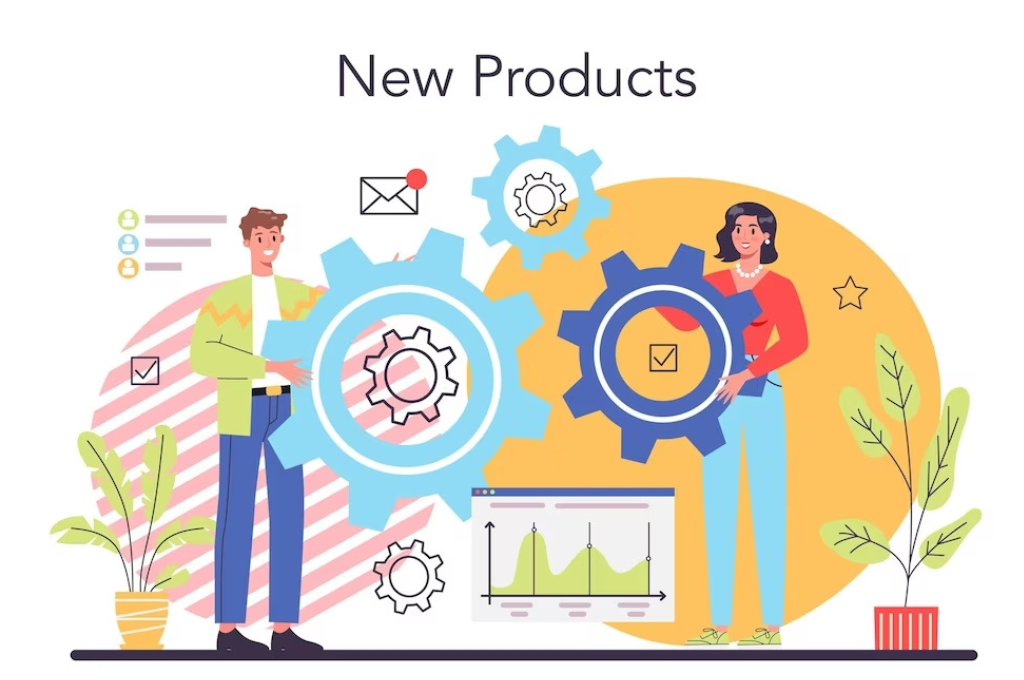A simple software MVP takes around 2-4 months to build. And if you have some complex requirements, a software catering to hundreds of users, a subscription-based SaaS product model aimed at creating a new revenue stream, or any other large-scale software, the product development time might shoot up to years.
And despite giving it years for development, the quality always remains a concern.
What if the codes are incorrect?
What if there is a run-time error?
What if the software cannot handle any escalation in the user base?
With software being central to how businesses operate and generate revenues, these issues can certainly break your brand.
And that’s where the main challenge lies.
Businesses need quality software. But the time constraint pulls them back from building a digital product that will stun their users and generate revenue. However, several businesses have been able to score both - quality software and lower time to market. This has been possible by putting various software development strategies and software development practices.
And if you are also looking for those, you are at the right place.
This blog talks about some of the proven practices and strategies for software development that can help you build the best version of your software in the lowest possible time.
Strategy #1. Define The Software Scope
Defining the software scope is one of the most crucial parts of software development. It should be done early on to avoid any unnecessary changes or missed directions. It also enables everyone to align better and be on the same page.
Software scope includes different aspects of the software development process, including the main software idea or AI product idea, features/functionalities, deliverables, timelines, milestones, documentation, budget, responsibilities, and much more. It would also include the working methodology that you plan to follow throughout the development. Whether you choose the agile software development way of working or the waterfall model or Kanban, or any other, you need to define it in the scope.
.png?width=536&name=custom%20software%20development%20strategies%20(1).png)
With a well-defined software scope, you can not just enforce quality within the custom software development process but also speed the entire process up.
You need to build a strong foundation for your software. The infrastructure, methodology, technologies and other things should be clearly mentioned in the scope of software before taking on your project for faster and quality development. In this matter, you may consider implementing microservices as a software development approach as it helps to develop and much faster and easier.
Strategy #2. Follow The Agile Approach
Working methodology and the process plays a pivotal role in how fast your software is developed. It decides the flow of the development, collaboration type, and the manner in which your software is launched.
Agile software development has been proven to be a powerful strategy for building great quality software. As a methodology, agile is known for promoting speed and efficiency.

By agile, we mean a development that is iterative and continuous with shortened delivery times and releases every few weeks. It follows the 12 principles mentioned in the agile manifesto. The agile development process includes the following steps:
- Planning the project and creating a software development roadmap
- Breaking the development into smaller milestones and planning their release as MVP
- Planning sprints for each member of the software development team and their deliverables
- Holding daily scrum meetings to review progress and eliminate bottlenecks
- Developing and delivering the prototype with the first functionality
- Reviewing the sprint with QA and testing team and testing on the beta users
-
Holding retrospective meetings with the product owner, development team, scrum master, and other people in the team
While agile software development is no different from the traditional way, what sets it apart is the deliverables and timelines.
The entire development process is broken down into several sprints. These sprints usually are two-four weeks long. After two weeks, you can analyze the MVP development, share your feedback, and the team will work iteratively to incorporate those as well. Each iteration ensures enhancements from the previous version.
Why is agile software development a great strategy for faster and high-quality development? There are several reasons behind it.
-
One is because it allows for efficient change management. You can release it in iterations and improve the next version based on the feedback received.
-
Two, agile minimizes the rework required in case the software quality or deliverable doesn’t match the expectations. Unlike waterfall, the entire effort put into delivering the final product at the end doesn’t go to waste. In case rework is required, you need to rework on 2-4 weeks’ work.
-
Three, you can achieve technical excellence with agile. You tend to achieve better results than previous iterations in agile. This fosters excellence in terms of the quality of codes, error-free functionality, and more.
No wonder half of the tech giants, including names like Apple, IBM, and Cisco, are using agile for development.
Strategy #3. Prioritize Urgent Over Recent But Keep An Eye On End Goal
The software universe is pounding with new advancements each day. Whether it is new technology development, a version of the existing frameworks, or even the emergence of new tools for development, you will always find something new and better to incorporate into your software. Many businesses tend to give in to the FOMO of new techs and change the course of their product development.
.png?width=536&name=custom%20software%20development%20strategies%20(2).png)
However, this would not just disrupt the flow of the development but also kill your software development team’s productivity. However, businesses cannot completely give up on changes within their development. That’s where this strategy comes in.
You need to start prioritizing urgent tasks over the recent changes. But this should not come at the cost of your end goal. Anything new might be a distraction from the set software and might even slow down the development.
In fact, it need not just be new; it could be a stakeholder’s whim, an issue faced recently, or a buzzing tech issue.
You also need to distinguish between what is just termed recent urgent and what is important for complete development.
This is where you go back and glance at the scope of the software. If the change required is urgent and is necessary to satiate the immediate user expectations, include it in the following sprint and plan your days accordingly. Make sure that it is significant enough.
Strategy #4. Outsource To An Established Firm
Nothing can beat the speed and quality that you can receive by outsourcing software development. This practice has been in use by tech leaders like IBM and FDS since the 80s to plug their technology gaps. Today, the industry is over $526 billion and is expected to reach $682 by the end of 2027.

When you choose to outsource your development to an offshore company, you get the expertise and experience of an established firm that has worked on several such projects. They come with years of experience in managing projects, streamlining processes, and enhancing workflows. Not just that, they know how to navigate challenges that might crop up during the course of the development.
The offshore outsourcing companies have a complete process for quality checks and ensure that they deliver bug-free codes that run seamlessly. Moreover, they have project managers who monitor the progress of projects and the work of the remote teams and deliver within the committed time frame.
Also Read: Hiring Remote Developers From India: The Complete Guide
They are not bothered by other internal distractions or business-related requirements.
They can focus solely on building your software while you take care of other core business competencies.
All in all, with outsourcing to an offshore software development company, you can do both- save time and get quality software. You just need to be very thorough while evaluating your software development partner.
Strategy #5. Embrace The DevOps Culture
DevOps, short for development and operations, is a way of communication between the two departments. Embracing cloud & DevOps means bringing together the two teams and ensuring continuous processes throughout for better quality and faster development.
This model is popular among the IT community for enhancing the quality of software developed.
As per an HBR research report, 70% of companies that adopted DevOps have seen an increase in their time to market the software. And 64% of these companies even witnessed an increase in the software quality using DevOps.
.png?width=536&name=custom%20software%20development%20strategies%20(3).png)
Unlike popular belief, DevOps transformation does not mean you adopt a new tool or a new SDLC process. It is a cultural change that you bring about in your organization to improve the quality of your software and build it faster. You bring together people, processes, and technologies to bring about a change that benefits the digital product that you build. This software development strategy helps shed down the siloed structure of development and operations and brings them together to create value.
By embracing DevOps culture, businesses can achieve:
- Continuous Development
- Continuous Planning
- Continuous Quality
- Continuous Integrations
- Continuous Improvement
By adopting DevOps, businesses also incorporate agile and lean practices into their software or SaaS development life cycle, which, in turn, enhance productivity and the overall speed of development.
Add-on Tips For Faster & Quality Software Development
Well, those were some strategic moves you can implement within your development process to enhance the quality and boost the speed of your development. But those are certainly not all. There are several simple and smaller actions that you can take in order to improve your overall development process, and, in turn, the quality of the final software.
Apart from adopting the strategies listed above, you can also follow the following tips to speed up software development while ensuring quality.
-
Prioritize Product Features: Every product owner wants to add new features to their software. They want it to solve different problems. But aiming to incorporate all those features in the software could be an invitation to chaos. The best way to get things done is to prioritize features of your software based on immediate user expectations.
-
Plan Course Correction For Mistakes: There will be mistakes when you take up your software development project. However, what will help you stand tall is to have a plan for course correction in case of any mistakes. This would require you to also be able to identify ahead of all the mistakes that are expected to happen. When planning a course correction for the potential mistakes that may arise in your software development project, there are a number of reliable strategies to consider implementing. For example, using Git squash commits can be an effective approach. This technique consolidates multiple changes into a single commit, which simplifies version control and allows you to rectify errors efficiently without disrupting the codebase’s history.
-
Give Automation a Chance: The pandemic forced the human workforce into homes. To ensure business continuity, many companies gave automation a chance. And this trend is not expected to go anywhere, anytime soon. It can be used for testing the codes to improve the overall quality and speed up the development.
.png?width=536&name=application%20modernization%20(2).png)
-
Experiment With Low-code & No-code Platforms: Low-code development and no-code development are two of the hottest buzzwords in the software development community. Businesses are using no-code and low-code development platforms to build their application faster. The drag-and-drop functionality of these tools makes it possible to build and launch an app in a matter of days.
-
Hold Regular Meetings: Another important tip that can always prove helpful when planning to build high-quality software faster is to regularly meet up with your software development team. Whether it is through daily scrum meetings or through a one-on-one call with the software developers and others, make sure to be in contact with your team and check in with them regularly.
-
Make Use Of Modern Tools: There are a plethora of tools available in the market when it comes to accelerating software development. You can use remote working tools, project management tools, and several AI/ML-powered tools to automate the tasks. GitHub, StackOverflow, Zoho Creators, GitLab, Slack, Monday, Jira are just some of the tools you can use. There are several more modern tools including free project management software, that you can use to get things done faster.
-
Launch An MVP First: Like prioritizing features, MVP development also follows the approach of launching a smaller but valid and useful version of the product first and moving forward with iterations. Apart from speed and cost savings, there are several other benefits of MVP development, especially for startups. You can test the UX functionality, analyze the market demand of the product, verify and validate your monetization strategy, and constantly update your product as per the user feedback received.
Time To Get Started With Software Development
Forward-thinking CEOs, CTOs, and other technical co-founders have been looking for ways to enhance their software quality and build it faster. And iterating quickly and releasing faster can be the key to achieving both these goals.
By adopting software development strategies like outsourcing to India, following an agile approach, setting clear software scope, prioritizing urgent tasks, and embracing a DevOps culture, businesses can start seeing the desired results. Additionally, these strategies can help them gain a competitive advantage and meet the market needs efficiently.
At Classic Informatics, we can help you build your custom software within the stipulated time frame for a quicker launch. We are agile enthusiasts who have embraced the DevOps culture. By outsourcing to us, you get a team of professionals who have been working diligently to build software that impresses the users. You can choose to outsource your software development to us or simply build a development team or even hire dedicated developers to plug certain technology gaps. We hold expertise in custom software development, SaaS application development, digital experience, digital transformation, and more.
We have also delivered large-scale projects within tight timelines. So, get in touch with us, and we can start by discussing your requirements and your software scope.
































